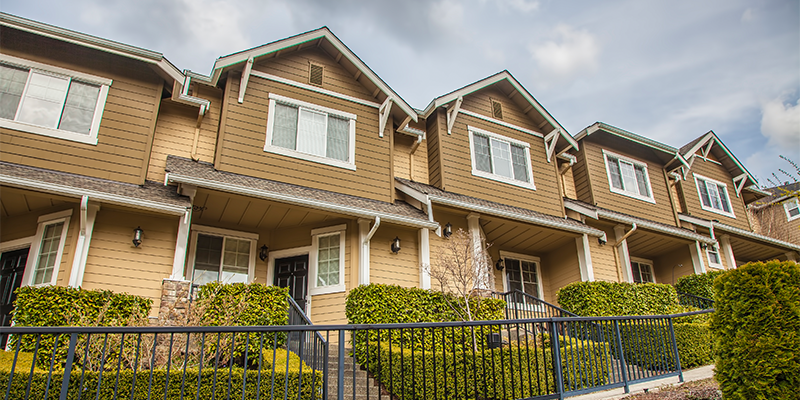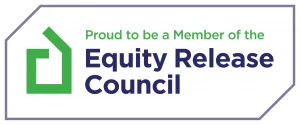Which Mortgage Repayment is Right for You?

It is no secret that, in general, the average person in the UK is confused by mortgage products.
This is primarily because the education system does not teach students about the property market extensively and financial areas like interest rates and mortgage products are not taught in any meaningful way.
It is also because mortgage products are created by financial institutions to compete with each other and the products one lender offers will differ to some degree from another lender.
This range of products can make choosing the right mortgage a daunting task, especially if you are unsure which one is in your best interests.
This guide looks at an often overlooked and somewhat complex area of mortgages the method of repayment. You might be surprised to learn there are many types of mortgage repayment and also some mortgages where you don’t need to pay the capital as you go.
Let’s get to grips with mortgage repayments.
Are There Multiple Types of Mortgage Repayment?
Yes, there are many types of mortgage repayment, the most common of which you are probably familiar with the so-called ‘repayment mortgage’.
Other than repayment mortgages you can also get mortgages that approach repayment differently:
- Investment-Linked Mortgages
- Savings Backed Mortgages
- Mixed Repayment Mortgages
As mentioned above, you can also get a mortgage where you only pay the interest and when the mortgage ends you will have the capital left to pay in a lumpsum this is somewhat similar to car finance agreements where you have a ‘balloon payment’ at the end of your loan.
At this point, it is best to mention that while there are mortgage products that fall into each category available on the market, not all products will be available to you depending on a number of factors.
We will address the restrictions in place as we look at each product.
How Are Mortgage Repayments Calculated?
Simply put, the capital repayments you make on a mortgage account for the exact loan sum that you have borrowed is calculated by the lender.
If you borrow £300,000 from a lender, the amount of capital you will need to repay is £300,000.
The lender then adds an interest rate to your mortgage.
When the interest is added to the mortgage the total amount you owe to a lender might be closer to £500,000 on a £300,000 loan.

The total amount owed depends on the interest rate applied by the lender.
Once the lender has calculated the total amount owed, they will typically divide that payment into equal monthly payments that take you to the end of the term of your loan.
For example, with £500,000 (made of interest and capital) borrowed over 25 years, you would expect your monthly payments to be £1666.66 on average.
Because interest rates vary between lenders and mortgage deals are normally much more competitive with regard to interest rates, it is possible to reduce the amount of interest you pay over the lifetime of a mortgage by remortgaging regularly.
When you consider that interest payments account for a large chunk of your mortgage remortgaging is something you should look to do each time your existing mortgage product expires.
Free consultations available in the UK.
Get Started NowRepayment Mortgages
The above scenario and example outlines how a traditional repayment mortgage works.
Simply put, you borrow money and interest is charged. Then you make a monthly contribution to reduce the mortgage balance.
At the beginning of a mortgage, you will notice that on a mortgage statement the amount of capital does not decrease very quickly as you pay the mortgage this is because your initial payments will be mostly clearing interest.

As the mortgage progresses and the interest is reduced, you will find the capital starts to drop fairly quickly, until your very last payments where you are paying mostly capital.
If you are looking for a residential mortgage in the UK, you will almost always be using a repayment mortgage.
The exceptions to this are:
- If you have investments that are suitable to be linked to a mortgage
- If you have savings that can be offset against the mortgage
- If you’re looking for a commercial mortgage for example, a company buying a residential property.
Repayment mortgages allow you to pay the interest and capital. When the mortgage has ended (with all monthly payments made) you will own the property outright.
Interest-Only Mortgages
Interest-only mortgages are normally reserved for the buy-to-let market. However they can be used in commercial mortgages as well.
With an interest-only mortgage you only make payments on the interest for the loan and the capital is not repaid leaving it outstanding at the end of the mortgage term.
For example, using our £300,000 mortgage example with a total of £500,000 outstanding (£200,000 of interest), you would only have a monthly payment of £666 over a 25-year term.
At the end of the 25-year term, the £300,000 would still be outstanding.
You can pay capital on interest-only mortgages during the mortgage term by making what’s known as overpayments.
Some lenders allow you to make overpayments penalty free up to a certain threshold, while others will charge early repayment charges.
This threshold is typically up to 10% of the outstanding balance per annum.
For example, you may be able to make up to £10,000 worth of overpayment each year on an interest-only mortgage without paying additional fees.
When making an overpayment on an interest-only mortgage you will need to be careful to explain to the lender that you are intending to pay down the capital rather than the interest.
Ordinarily, an overpayment on an interest mortgage would be taken from the interest portion of the mortgage.

Making an overpayment on the capital can be advantageous as the interest on the loan will be recalculated accordingly and it will reduce your monthly payments going forward.
With that said, different lenders have different rules when it comes to overpayments on an interest-only mortgage and making overpayments with some lenders can be unfavourable.
At the end of an interest-only mortgage you typically have three choices available to you:
- Pay off the capital in one lump sum and then own the property outright.
- Sell the property to repay the capital.
- Take a new mortgage for the amount outstanding by remortgaging.
It is important to note that although you have paid the interest on the capital, at the end of the mortgage the capital is still owed to the lender you will need to account for this when taking an interest-only mortgage.
Unfortunately, in the past, interest-only mortgages were commonly used alongside investment vehicles called Endowment Policies.
These policies often failed to grow to the amount required for people to cover the final payment on the mortgage and created financial hardship for those who had relied on them.
As a result of this a couple of changes were made to interest-only mortgages:
- Lenders will ask upfront on the application how you intend to repay the capital. They will then assess that plan to decide if it is suitable. For example, you might opt to tell the lender you will sell the property.
- Interest-only mortgages aren’t available for regulated residential purposes, the FCA deemed them unacceptable for protecting people from losing their homes.
What Our Clients Have To Say
Investment-Linked/Backed Mortgages
We have discussed a type of investment-linked mortgage above with the infamous Endowment Policy mortgages.
Investment-linked mortgages function in a similar way to the abovementioned products, but they are now harder to come by and lenders that offer them have extremely tight requirements for you to qualify.
In the UK there are only a handful of lenders who will provide an investment-backed mortgage and these are treated as unregulated mortgage products despite the investment aspect being heavily regulated.
Lenders typically will want to see an investment portfolio that is equal to, or greater than the amount you wish to borrow.
In other words, the total value of your investment portfolio will likely need to be more than the amount you’re looking to borrow.
You might have investments in shares totalling £500,000 and wish to borrow £300,000 but do not want to sell the shares to do so.

The lender will essentially enter into an agreement with you to lend the money for the mortgage and in return you put your investment portfolio up as collateral.
It is rare to find a lender that will allow you to link an investment portfolio with a speculative value i.e if your portfolio is worth £100,000 and you’re hoping in 25 years’ time it will be worth £500,000.
This is exactly the type of investment-linked product that was used with Endowments and lenders have realised how high-risk such lending is.
Savings Backed Mortgages/Offset Mortgages
A safer alternative to investment-linked or backed mortgages is known as the offset mortgage.
As a result, lenders are more likely to offer these products and there are even mainstream lenders who will offer offset mortgages for residential purposes.
To get this type of mortgage you will typically need to have a substantial amount of savings and the lender will ask you to open a savings account with them.
This savings account will operate alongside the mortgage account.
If you have the full amount of the mortgage loan in savings with a lender, they may offset the entire amount of interest from one account to the other.
For example, if you borrow £300,000 but have a savings account with £500,000 in it, the lender may not charge you interest.
On the other hand, they won’t give you any interest on your savings the interest is therefore offset.
The reason the savings account value needs to be higher to achieve this is because you will need to cover both the capital and interest portion of the mortgage.
Most offset mortgages are not funded in full by the savings account though, and there will still be interest applied by the lender.
The interest charged however will be reduced by the amount of interest offset by the savings account.
As the lender has a pot of money to back up the mortgage, these products can be used for residential purposes with an interest-only mechanism.
This is because when an interest-only offset mortgage ends, the lender already has the money to pay the capital (or a large part of it) in an account under their control.
Mixed Repayment Mortgages
As you might have guessed, the above options can be used in conjunction to some extent, especially a repayment mortgage and an offset mortgage.
You might have a savings account that has enough to offset the interest portion of a mortgage but wish to make capital repayments each month.
With a mixed mortgage, you can do just that and make monthly repayments (from a source other than the savings account) and retain the savings account to offset some or all of the interest.
Mixed mortgages are excellent if your circumstances allow for you to take one as they give you the option to borrow money and reduce the amount of interest you pay without eroding any initial savings pot.

Some mortgage lenders are now using this type of mortgage to help with deposits. For example, the Barclays Family Springboard mortgage is a type of savings backed mortgage, except instead of covering the mortgage, the savings account covers the initial deposit.
Beyond that deposit value, the mortgage will function in the same way as a repayment mortgage with capital and interest being charged.
Springboard mortgages allow you to essentially get a 100% mortgage and Barclays has achieved this by having the deposit paid into a savings account by a family member to be used as a safety net.
Free consultations are available in the UK.
Get Started NowChoosing A Repayment Method
For most people, your mortgage repayment methods will be straightforward and easy to understand.
It is likely that you will obtain a traditional repayment mortgage and providing you understand how that product works, you will be absolutely fine.
It gets a bit more complex if you have savings, investments or you are looking to reduce your monthly mortgage cost by allowing the capital to remain only paying the interest.
All mortgage repayment methods are going to be specific to your circumstances.
There is no catch-all repayment method that is suitable for everyone.
This means you will need specialist advice.
The great news here is Boon Brokers is a fee FREE mortgage broker and we are happy to discuss your circumstances and advise the best mortgage product for you.
Boon Brokers is a whole of market mortgage, insurance and equity release broker. Contact Boon Brokers today to find out which repayment method suits you best.
Gerard BoonB.A. (Hons), CeMAP, CeRER
Gerard is a co-founder and partner of Boon Brokers. Having studied many areas of financial services at the University of Leeds, and following completion of his CeMAP and CeRER qualifications, Gerard has acquired a vast knowledge of the mortgage, insurance and equity release industry.- Should I Use A Broker Or Go Direct?
- How Much Does The Average Mortgage Cost
- How To Get A Mortgage With A New Job
- Reasons Why Mortgage Applications Are Declined
- Mortgage Borrowing Calculator
- Military Mortgages Guide
- How To Avoid Early Repayment Charges
- What Is A Mortgage In Principle?
- Is Checkmyfile Trustowrthy
- How To Build Home Equity
- How Much Deposit Do I Need For A Mortgage
- What Are Solicitor Searches?
 Authorised and regulated by the Financial Conduct Authority. No: 973757
Authorised and regulated by the Financial Conduct Authority. No: 973757




